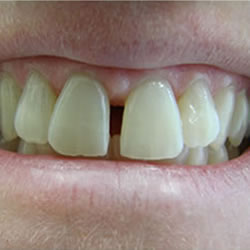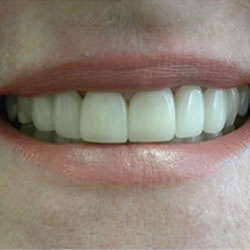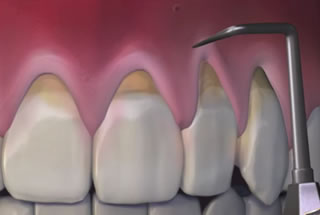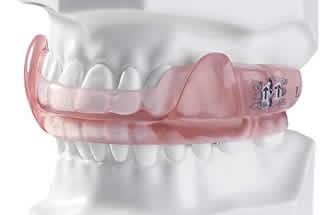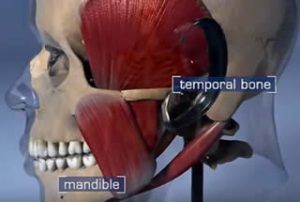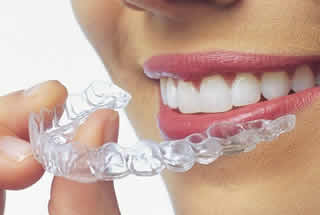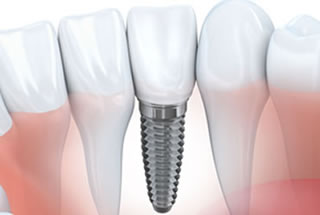
Everyone wants to have a whiter, healthy smile. Home teeth whitening has become an extremely popular means to achieve those pearlier whites in the past couple of decades. In many cases, over-the-counter whitening kits are effective and safe. However, there are some disadvantages and risks to using over-the-counter home whitening kits:
- Off-brand whitening kits often contain dangerous concentrations of bleach or peroxide. This can cause erosion of the tooth enamel, and irritation to the sensitive gums and soft tissues of the mouth.
- Because many kits contain trays that do not adhere properly to your teeth, gums can become irritated and chemicals can leak out and be ingested causing stomach problems.
- Poorly fitted trays and varying concentrations of chemicals from lower quality kits may also result in unwanted discoloration of teeth or uneven results.
- Exposure to excessively harsh chemicals in off-brand kits can also cause gum shrinkage and oral infections.
When considering at-home whitening, it is best to stick to name brand kits to ensure the quality and safety of the treatment. Many popular brands of kits are both safe and efficient when used as directed. In any case, you should not consider at-home whitening if any of the following apply:
- You have deep, untreated cavities.
- You are pregnant.
- You suffer from gum disease.
The safest and most effective method for whitening your teeth is to have treatment by a dental professional, either in-office or with professional take-home trays. A qualified dentist can whiten your teeth up to ten shades in as little as one office visit. Consult with your dentist before pursuing any type of whitening treatment to ensure you will achieve the whiter smile you desire in the safest and quickest manner possible.
Take the first step towards a confident smile. Contact our Toronto dental office to schedule your consultation!

While life can be full of moments that are wonderful, there are days that just naturally stand out: your wedding, your graduation, a very special anniversary or birthday, or a big job interview you’ve always wanted. Many of these events are photographed, and when you look back at those photos in years to come, you naturally want to look your very best. Will you look back on your photos and wonder, could my teeth have looked better? The answer could be yes if your teeth aren’t the best and the brightest they can be.
Teeth are covered in enamel, a strong white coating on top of the internal structures of your tooth. As we age, enamel naturally wears away. Because it cannot be replaced naturally, the enamel thins, and the yellow layer of dentin beneath is exposed. This leads to smiles that are discolored and yellowed, appearing dingy and dim.
The foods we eat affect the brightness of our teeth, and some can begin to stain long-term. Beets, blueberries and blackberries can leave stains, as can tea, coffee, dark soda and red wine. Even soy sauce and balsamic vinegar can discolor your smile. If you have any crown, bridges or veneers, those structures aren’t affected by long-term stains, and can begin to stand out in unattractive contrast to your natural, darkening teeth.
Begin the process for your important day by scheduling an appointment with your dentist. Have your teeth examined and cleaned, and learn what teeth whitening procedures would best benefit your particular smile needs. Don’t wait until the last minute, as some whitening procedures take time to reach optimal effects. Some whitening methods increase the sensitivity of your teeth or surrounding gums. Planning ahead can allow your teeth some time to recover prior to your special event.
After your professional teeth whitening, you’ll be surprised at your self-confidence. Your mood will improve as you face those around you with your best and brightest smile, and everyone you meet will sense it. Love the photos you’ll be taking for years to come, and talk to your dentist today.
Are dental issues holding you back? Take control of your oral health by booking an appointment with our experienced team at our Toronto dental office.
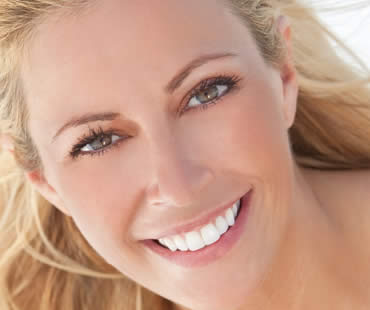
Whitening your teeth to improve your smile is a popular cosmetic treatment, but you should understand that it does have some limitations to consider. If products are used correctly or if you seek the professional help from a qualified dentist, you can usually achieve a bright and appealing smile. Here are some things to think about when it comes to teeth whitening.
Methods:
You should not expect over-the-counter methods to whiten your teeth more than a couple of shades. The whitening ingredients available in products at your drugstore are not as strong as those used at your dentist’s office. Consistent and correct use of over-the-counter options can help whiten your teeth, but it may not be as much as some patients hope will occur. On the other hand, professional methods can produce dramatic and quick improvements to the color of your teeth.
Habits:
Certain habits contribute to stains on your teeth and if you don’t limit or stop activities prone to discoloring teeth, your newly whitened teeth may become discolored again. Foods like berries and curry, drinks such as coffee and red wine, and habits like smoking will all likely negatively affect your tooth color.
Restorations:
Bridges, crowns, and laminates might not respond in the same way to whitening agents as your natural teeth do. Ask your dentist about how your restorations might react to teeth whitening.
Side effects:
Tooth sensitivity is the most common side effect of whitening procedures, causing some patients to be unable to handle some methods of treatment. Gum sensitivity is another potential problem, but usually dissipates soon after the whitening procedure. Weakening of a restoration may also occur during whitening treatment, sometimes making it necessary to replace them.
Expectations:
Teeth whitening must be occasionally repeated if you want your bright smile to remain for a lifetime. The effects do not last indefinitely, because aging and activities can stain your teeth. Excessive bleaching may damage your teeth though, so be sure to discuss your whitening treatment with your dentist.
Do you live in Toronto or the surrounding area? Our team is ready to help you achieve your smile goals. Schedule your appointment today.

Magazine articles often say that a smile reveals a person’s personality. If so, you don’t want to have dull, yellow, stained, dingy teeth! Instead you want a faultless set of pearly whites that communicates the best things about you, such as good hygiene and a confident air.
To transform your smile from dull to brilliant, teeth whitening is a great option. The field of dentistry has developed a whole array of products and procedures for brightening smiles. For example, patients may choose to completely hide their discolored teeth behind dental veneers. Or, tough stains can be covered up with dental bonding. If you’re looking for methods that simply bring your yellowed teeth back to a more appealing shade of white, there are several teeth whitening techniques to choose from:
- Over-the-counter products are available from your local drugstore including whitening strips, gels, pens, toothpaste, mouth rinses and more. These require consistent use following the directions, and take longer than most other methods. Most products do provide some level of improvement, but not as dramatic as professional methods.
- Home whitening methods are available from your dentist, such as customized trays that you fill with a special bleaching solution to wear at home for a period of time. At-home whitening typically takes several weeks to achieve desired results.
- Professional whitening is performed at the dentist’s office using specialized tools. It is the most effective method and results are visible in only about an hour, due to the highly concentrated bleaching solution and enhancement with ultraviolet light or lasers.
Teeth whitening not only brightens your smile but also can shape your entire personality. A common benefit is increased self-confidence because you no longer feel you need to hide your teeth, but instead you tend to smile and laugh and speak more easily. Feelings of embarrassment about your teeth can affect you in many ways, but a smile that you’re proud of can improve the way you interact with others. Ask your dentist about whitening methods that can help you improve both your smile and your personality.
Do not let another day go by without taking care of your dental needs. Request an appointment now at our Toronto dental office!

Your smile is a noticeable part of your appearance, and yellow dingy teeth can leave a negative impression on others. Most people have to work at having a bright sparkly smile, because teeth can discolor with age, diet, and lifestyle.
You may not realize that sipping a glass of red wine or coffee can be a detriment to your smile, as can sugary items that allow acids to attack your tooth enamel. Smoking is an even worse culprit. It not only leaves ugly spots on the surface of teeth, it also contributes to poor gum health.
If your teeth are already stained or if you’re having a hard time breaking the habits that discolor them, teeth whitening is a good way to improve the look of your smile. There are numerous methods to regain the natural glow of your teeth, ranging from over-the-counter techniques for home use to professional treatments in an office setting.
Whitening products available at your local drug or grocery store include things like toothpaste, chewing gum, mouthwash, gels, and whitening strips. These are readily available and usually inexpensive options. Most of these products are simple to use and can be done in the convenience of your home when you choose. However, over-the-counter products are not as strong as professional methods. This means that results are not dramatic and usually take a long period of time of consistent use. Also, the effects may not last as long as you hope before it’s time to consider whitening again.
Professional teeth whitening is often performed by general and cosmetic dentists in an office environment. Bleaching is a popular professional method. The biggest advantage of in-office treatment is the fast results, with a visibly brighter smile evident in about an hour. Results are often dramatic, lightening teeth by several shades. Professionals trained and experienced in these methods provide safe and effective treatment. Methods available professionally may cost a bit more than home options, but the dramatic results may be worth it.
Do not wait any longer. Book your appointment now and achieve the smile you have always wanted. Dr. Cruz is accepting new patients from Toronto and the surrounding area.
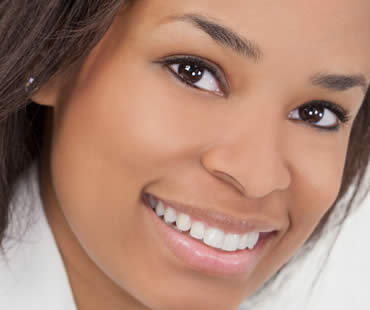
Life is full of special events that you will remember forever. When you look back at photographs from your special days, you will want to know that you looked your very best. Weddings, birthdays, reunions, graduations, anniversaries, job interviews, or that very special first date are times you will want to put your best face forward. Everything begins with your smile. Your dentist can help you prepare for these kinds of events by brightening your smile, making you look younger and more vibrant and boosting your self-confidence.
Your teeth naturally discolor with age, and this process is accelerated as you eat various foods and dark beverages. Blueberries, blackberries, and beets can all leave stains on your teeth. Dark sodas, coffee, tea, and red wine can also leave their mark with residual color on your teeth. Don’t find yourself feeling self-conscious about your discolored smile; talk to your dentist about what teeth whitening options are available to you. Not all whitening processes are good for every type of teeth. Your dentist will know what is ideal for you.
Before you whiten, it is important to have a dental exam and cleaning. The results of your whitening depend on the initial condition of your teeth. Cleaning your teeth ensures that the whitening procedure affects all of the areas of your teeth, and doesn’t leave out areas currently hidden by plaque or tartar.
Because some teeth whitening techniques require time to achieve the best results, you need to plan ahead. Begin with a consultation with your dentist several weeks prior to your special day, to allow time for the whitening process to work. Some people experience increased sensitivity to their teeth after whitening. Starting early will allow your teeth to recover from the whitening process.
A brighter smile will always help you look and feel better. It will help you make the most positive first impression. On your special day, when you smile for the camera, your confidence will show. You’ll love what you see in photos for years to come.
Take the first step towards optimal oral hygiene. Reserve your dental appointment at our Toronto dental office now and experience personalized care.







 E-Mail Us
E-Mail Us  416-595-5490
416-595-5490